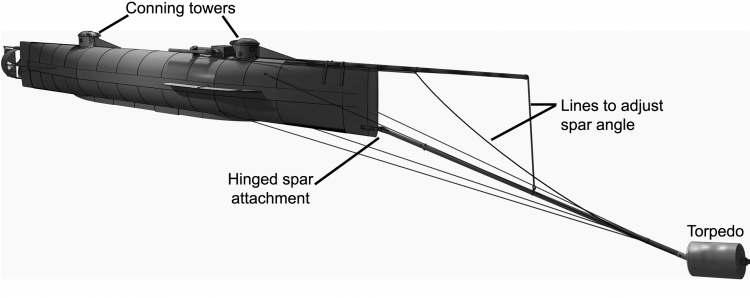On Feb. 17, 1864, outside Charleston Harbor, South Carolina, a Confederate submarine known as the H.L. Hunley sank a 1,200-ton Union warship, the USS Housatonic. It was the first combat submarine to sink an enemy ship. Mysteriously, however, the sub itself then also proceeded to sink, for no obvious reason. Now, Duke University PhD grad Rachel Lance believes that she knows what happened.
The wreck of the Hunley was discovered in 1995, approximately 300 meters (984 ft) from the remains of the Housatonic, and was subsequently raised in 2000. The 40-ft (12-m) submarine was almost entirely intact, and the skeletons of all eight crew members were still located along a hand crank that was used to propel it. The men hadn't operated the bilge pumps or opened the topside air hatches, which doesn't seem to be in keeping with the theory that they died from drowning or suffocation.
Instead, Lance thinks that they were killed by the shockwave from the explosion that sank the Housatonic.

The Hunley didn't shoot out self-propelled torpedoes like a modern sub, but instead carried a copper keg of gunpowder on a 16-ft (4.9-m) pole out in front of itself. The idea was that it would ram ships with that keg, hitting them below the waterline. Unfortunately for the sub's crew, this placed them perilously close to the blast zone.
In pond tests, Lance exposed a floating 6.5-ft (2-m) steel model of the Hunley to proportionally-scaled pressurized-air blasts and black powder explosions. Pressure sensors inside the model indicated that in a full-scale version of the setup, the force of such explosions would be sufficient to instantly cause fatal soft tissue injuries to the crew, particularly to their brains and lungs.
Although the Hunley was apparently subjected to test blasts when it was being designed, these were much smaller than the explosion that sank the Housatonic, plus the sub was located hundreds of yards away from them.
"Blast travels really far underwater," says Lance. "If you're practicing 200 yards away, and then you triple the size of your bomb and put it 16 feet away, you have to be at least aware that there's a possibility of injury."
A paper on her research was published this week in the journal PLOS ONE. There's more information in the following video.
Source: Duke University





